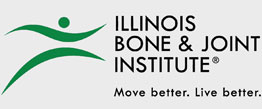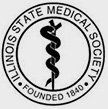Knee Arthroscopy
The most common need for a knee arthroscopy (or knee “scope”) is torn cartilage or ligaments. These conditions are usually a result of an acute injury.
Cartilage tears cause sharp pain with movement, bending, and/or weight bearing, may restrict normal motion of the knee, and can cause the knee to lock, or a sensation that something is catching or getting stuck inside the knee. There are two types of cartilage in the knee: articular cartilage, which is the glassy cartilage found at the end of bones, and lubricates the knee joint as it moves, and the meniscus, which is a tougher type of cartilage found between the thigh and shin bones, and acts as a shock absorber/cushion for the knee. There is a medial meniscus at the inner knee, and a lateral meniscus at the outer knee. Pain resulting from articular cartilage tears is sharp, but typically difficult to localize. Pain resulting from meniscus tears is usually well localized to the inner or outer knee, depending on which the meniscus is torn. It is common for symptoms of both cartilage or meniscus tears to wax and wane, but will persist over a period of time.
A knee arthroscopy is an option for patients with pain, locking, and/or giving way symptoms that interfere with normal daily activities and recreational activities. In certain situations, conservative treatment could be considered first. However, meniscus and cartilage tears, and most ligament tears do not heal themselves, so an arthroscopy is the most reliable solution for resolving mechanical symptoms or instability. Multiple cartilage or ligament injuries can occur in the same event of injury. More than one tear may need to be addressed in an arthroscopic procedure.
To learn more about knee ligament tears and treatment Click Here
A knee arthroscopy is a surgical procedure in which a camera is inserted into the knee joint through a small portal. There are usually two portals at the front of the knee that allow the surgeon to visualize the entire knee joint. Depending on the procedure, an additional portal or small incision may be necessary. Special instruments are inserted through the same portals as the camera, which allows the surgeon to perform the operation. Arthroscopic knee operations for cartilage include:
- Meniscus surgery: The torn meniscus fragment is shaved to stable borders, eliminating locking, catching, and pain. This is referred to as a “partial menisectomy
- Meniscus repair: Specific patterns of meniscus tears can be stitched together and protected by a period of non-weight bearing, allowing the meniscus to heal. When recovered, locking, catching, and pain are relieved.
- Articular cartilage surgery: Unstable flaps of torn cartilage are shaved to stable borders to prevent the further tearing, and the defect becoming larger. This eliminates symptoms of locking, catching, pain, and swelling. Sometimes, a microfracture is performed where small holes are drilled into the exposed bone of the defect, allowing the bone to bleed, and the area to fill in with “scar” cartilage. Once cartilage is torn or worn away, it cannot be regenerated. For large defects that cause persistent pain despite arthroscopy, cartilage grafting procedures can be considered. This would be an open procedure, and can be discussed more in detail with Dr. Durkin.





